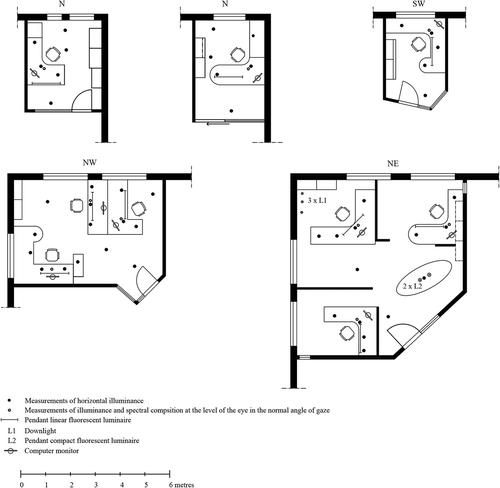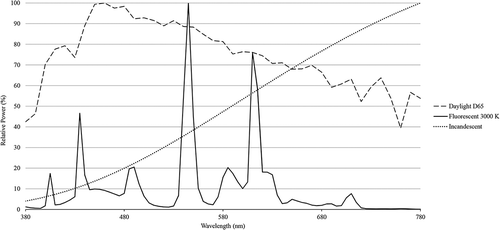Figures & data
Table 1. Weather conditions, positions of the blinds, and artificial lighting conditions at the times of measuring and the total number of static illuminance (Ill) and irradiance (Irr) measurements carried out during the five measurement periods.
Fig. 1. Five examples of office layouts. The plans show where the subjects were seated, positions of computer monitors and luminaires, and locations of the measuring points.

Table 2. Static measurements of horizontal illuminance at the normal working position (EHN), average illuminance in the room (EHR), vertical illuminance at the position of the eye (EVE), and ambulatory recording of illuminance (EAMB).
Table 3. Static measurements of the spectral composition at the position of the eye (IRRVE) and ambulatory (IRRAMB) measurements of the spectral composition of the exposing light radiation.
Fig. 3. Relative energy distribution for an incandescent lamp, a fluorescent lamp with a correlated color temperature of 3000 K, and daylight, CIE standard illuminant D65.

Table 4. Pearson product-moment correlations (r) between the three parameters included in the static measurement of illuminances in the offices, horizontal illuminance at the normal working position (EHN), average horizontal illuminance in the room (EHR), and vertical illuminance at the position of the eye (EVE).
Table 5. Results from t-tests showing the comparison of means between the ambulatory measurements of illuminance (EAMB) and the static measurements of illuminance at the position of the eye (EVE), horizontally at the normal working position (EHN), and average illuminance in the room (EHR).


